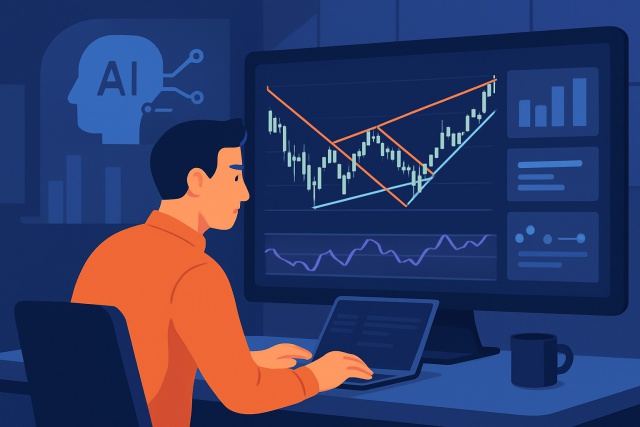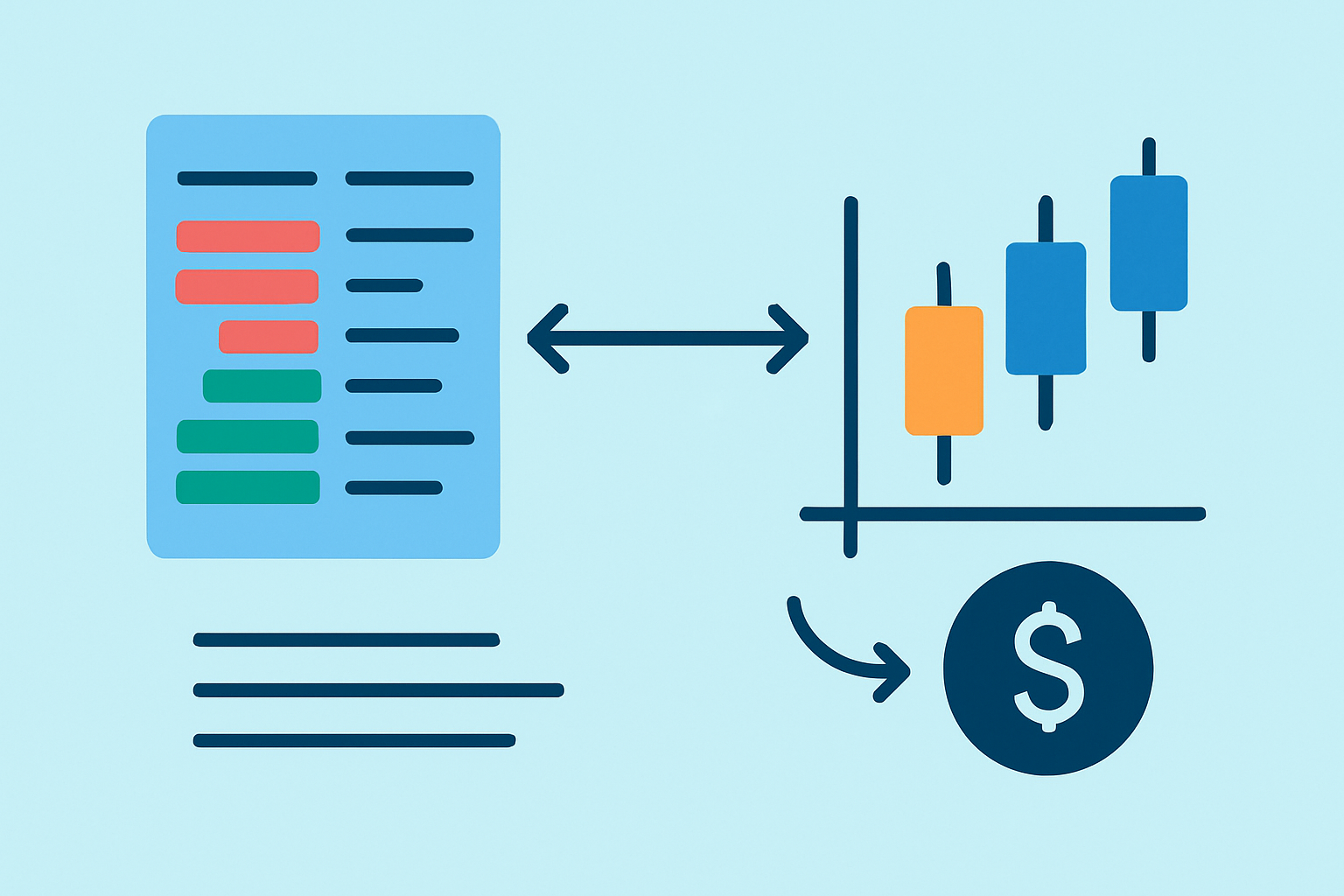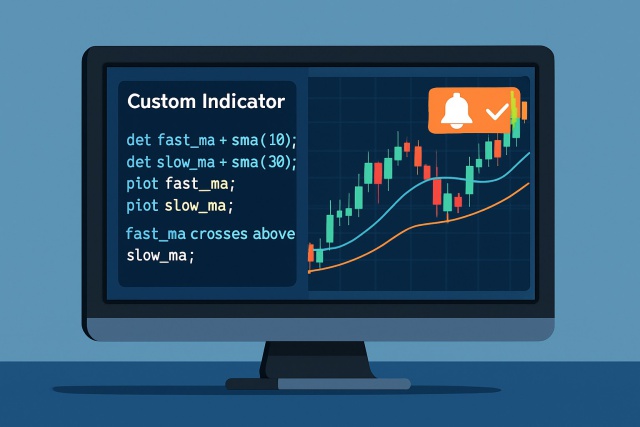
TrendSpider Strategies for Different Market Types
Master TrendSpider strategies for all market types with this in-depth guide. Learn how to harness au...

Understanding what is liquidity in trading is fundamental, as it boils down to how easily and quickly you can buy or sell an asset without causing wild price changes. Think of liquidity like the smooth flow of a river. When a market is more liquid, it’s easier to move assets without causing ripples. This article dives into what liquidity means in trading, why it matters to traders and investors, and how it shapes markets.
Liquidity in trading is basically how fast you can buy or sell an asset close to its current market price without waiting. Imagine a lively market buzzing with stalls and eager shoppers. Goods change hands quickly because there’s a crowd of buyers and sellers jumping in. Now, flip that around. An illiquid market feels like a sleepy side street where things drag longer than you would like and prices do a rollercoaster dance.
Liquidity in trading isn’t just one simple concept—it depends on the context you’re looking at. Market liquidity describes how easily you can buy or sell assets on exchanges without hassle. Funding liquidity focuses on how much cash or credit is available to keep trading activities going. On the accounting side, liquidity measures how quickly a company can turn assets into cash on the balance sheet. Operational liquidity concerns how smoothly money flows within a company’s daily operations.
Market liquidity hinges on active trading and clear transparency. It all boils down to how buy and sell orders shuffle together in the order book which lays out current bids and asks across different prices. That gap between the highest bid and lowest ask price, known as the "bid-ask spread," serves as a trusty signpost for liquidity. When trade volumes are bustling and spreads stay tight the market usually feels more liquid and nimble.
| Term | Definition | Example |
|---|---|---|
| Order Book | A detailed record of buy and sell orders sitting at various price points | Binance’s crypto trading order book showing bids and asks up for grabs |
| Bid-Ask Spread | The gap between the buying and selling prices — a little window into liquidity | BTC/USD spread of $10 giving a snapshot of the market’s appetite |
| Volume | The total amount of an asset changing hands over a specific period | High BTC volume on Coinbase, hinting that traders are quite active |
| Market Depth | How many orders are stacked up at different price levels — a sign of market resilience | A deep order book with plenty of buy and sell orders ready to move the needle |
When it comes to trading, liquidity often plays the unsung hero—quietly ensuring your trades do not get stuck in limbo. Simply put, liquidity is all about how easily you can buy or sell an asset without causing a stir in its price. If you have ever tried to sell something and found no takers, you know just how important liquidity can be. In the fast-paced world of trading, having plenty of liquidity means smoother transactions, less price slippage, and generally a more pleasant ride. So, understanding and keeping an eye on liquidity might not get your heart racing, but it will definitely keep your trading game on solid ground.
Liquidity is a big deal because it decides how smoothly you can hop in or out of trades at the prices you’re expecting. When liquidity is high, prices usually stick close to where you would hope and costs like spreads and slippage stay minimal, which is a relief. This stability gives traders peace of mind and no need to worry about sudden price jumps that throw off your plans. Plus, liquid markets make it much less likely you’ll get stuck holding a position longer than you want.
"Liquidity is like the lifeblood of financial markets, keeping transactions flowing without a hitch and shielding investors from those nasty surprise price swings. When liquidity runs dry, markets can get pretty shaky, and trading costs tend to jump up faster than you would like."
Liquidity in trading markets doesn’t just appear out of thin air. It is influenced by several key factors. The number of active traders and market makers often sets the pace and creates an environment where assets can move quickly. Trading volume shows how much activity happens daily. Regulatory policies and economic conditions always play a role and can either open the floodgates or create barriers to participation. Timing also matters because some markets become more liquid at certain hours, almost like clockwork. Additionally, macroeconomic news and major events often cause shifts that prompt traders to respond in ways affecting liquidity.
Traders often keep a close eye on key measures like the bid-ask spread and trading volume to get a real sense of liquidity. Each metric paints its own picture of how smoothly assets can change hands. For example, a tight spread signals a liquid market while a surge in volume suggests things are buzzing with activity.
| Metric | Description | How It’s Used | Example Value |
|---|---|---|---|
| Bid-Ask Spread | The gap between the highest bid and the lowest ask price — basically the cost of slipping in or out of a trade | Gives you a quick sense of what is eating into your potential profits when you buy or sell | 0.05% spread on BTC/USD |
| Trading Volume | The total amount traded during a specific time frame — think of it as the market’s heartbeat | A handy way to see just how lively and bustling a market really is | 50,000 BTC traded daily |
| Market Depth | The size of orders sitting at various price levels — a peek under the hood of buy and sell interest | Shows how smoothly the market can handle those big trades without sending prices on a rollercoaster ride | Large buy/sell orders at multiple price points |
| Turnover Rate | Trading volume compared to the total market capitalization, giving you a feel for how much an asset actually moves around | Offers a neat snapshot of an asset’s liquidity relative to its size — helpful stuff if you like to keep things fluid | 10% monthly turnover |
Low liquidity often throws a wrench in the works for traders. When there are only a handful of players or trading volume takes a nosedive, even small trades can send prices on a wild ride. Those wider bid-ask spreads increase transaction costs and getting orders filled can feel like waiting for paint to dry. Sometimes they just don’t fill at all, leading to frustrating price slippage. Trying to get in or out of positions in these sleepy markets usually turns into a tricky and pricey endeavor.
Many new traders often assume that liquidity touches everyone since it determines just how smooth or pricey your trades can be. Higher liquidity does not magically wipe out all trading risks, and the market has its own plans with price swings and other wild cards still in the game. Liquidity varies as niche markets and small-cap cryptocurrencies often have different dynamics compared to the crowd favorites.
Experienced traders rely on their grasp of what is liquidity in trading to better time their moves and reduce costs. They try to jump in during peak liquidity, like major market sessions overlapping or volume spikes, to avoid wide spreads and slippage. Picking highly liquid assets such as big-name cryptocurrencies on Binance or Coinbase usually makes placing orders smoother. Tracking liquidity signals like the bid-ask spread or market depth often gives a heads-up on what might come next. Plus, they avoid dropping large orders into thin markets since that is a recipe for painful price swings.

Visual representation of how liquidity facilitates smooth trading through order books and tight bid-ask spreads
Tired of missing opportunities and making suboptimal trading decisions? TrendSpider's cutting-edge platform automates complex technical analysis, saving you time and reducing human error.
With multi-timeframe analysis, dynamic alerts, backtesting, and customizable charting, you'll gain a competitive edge in identifying trends and making informed trades across global markets.
Are you ready to elevate your trading game? Binance, the leading cryptocurrency exchange, offers a seamless platform for traders of all levels. With its user-friendly interface and powerful tools, you can navigate the dynamic world of digital assets with confidence.
23 articles published
Transforming the field of commodities trading through sustainable investing principles, she bridges traditional finance with ESG considerations.
Read Posts
Master TrendSpider strategies for all market types with this in-depth guide. Learn how to harness au...

Discover the essentials of options trading for dummies. This beginner-friendly guide explains key te...

Unlock the full potential of TrendSpider with this authoritative guide to TrendSpider University tra...

Discover how to create custom indicators on TrendSpider with this step-by-step guide. Tailor your tr...
